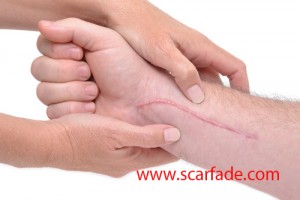After you’ve cut or injured your skin, it takes time for it to heal. The skin typically seals itself within 48 hours, depending on the depth of the injury. During this time, the wound stops bleeding. Once it’s initially sealed, the body begins to build scar tissue to fill in the area between the wound’s edges, causing a scar to develop. It can take months or even 
Inflammatory
Once the wound is sealed, the inflammatory stage begins. Bleeding stops, but your wound is still red. During the few days of this stage, your body produces antibodies to fight off infections, causing an increased blood flow to the area. Meanwhile, new cells begin to form a protective scab over the wound. During this time, don’t scrub or rub cuts or surgical incisions. They can reopen, setting back the healing process.
Rebuilding
During the next month or more, your skin enters the rebuilding, or proliferative, stage. Collagen is naturally produced while new branches of blood vessels form to carry blood and nutrients to regenerate new skin at the wound site. Your wounded skin gets stronger, but it’s still pink or red. Once your wound is closed and healing, you can begin to use silicone gel or scar reduction sheeting. This lessens the overproduction of collagen, improves the skin’s regeneration process and prevents excessive scarring.
Maturation
Ideally, a scar that has healed nicely is flat, pale and narrow once it has matured. This can take months or years, depending on the depth and size of the original wound. As you age, your scars continue to slowly fade. Silicone scar gel and sheets can still be used in this stage to help scars fade and mature more quickly. Once improvement is no longer seen with the use of the scar treatment cream, it can be discontinued.
Irregular Healing
Not all scars heal well. During the second stage, overproduction of collagen can cause formation of thick red scars that don’t mature properly. These are known as keloid and hypertrophic scars. They remain red and raised, but can improve with the use of silicone scar gel or sheeting, fading and becoming flatter.
To learn more about the effects of silicone scar gel on hypertrophic and keloid scars, read our Scarfade blog entitled, “Options for Treating Raised Scars.”
